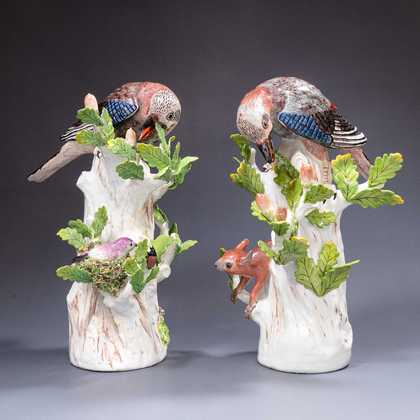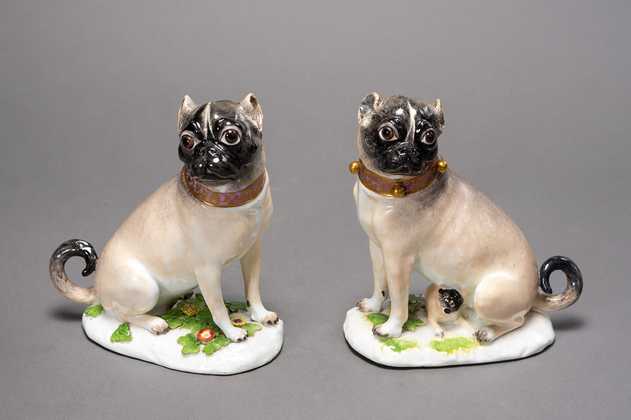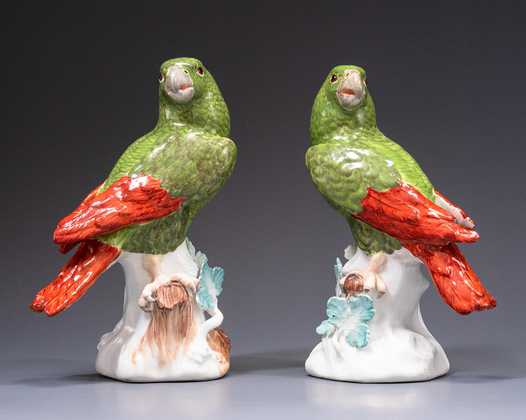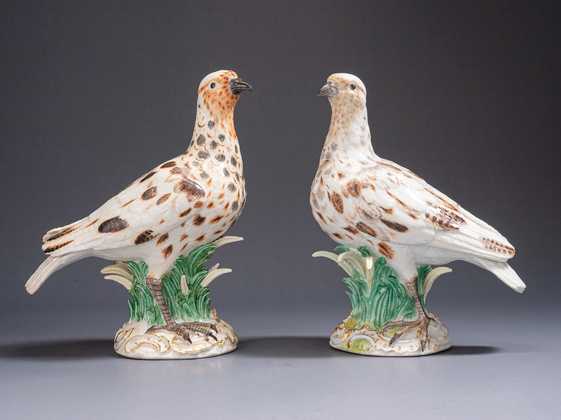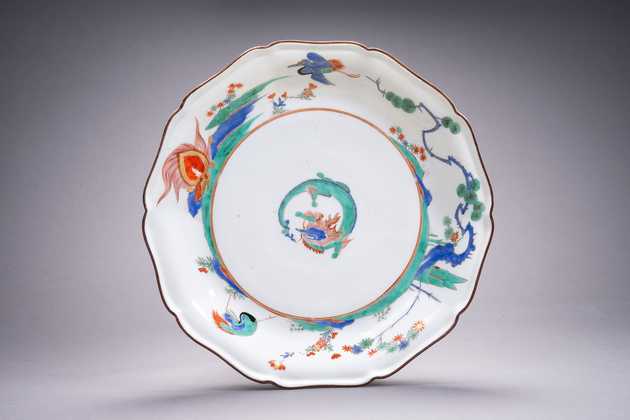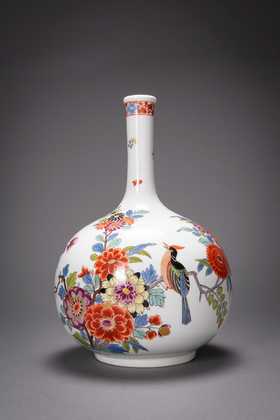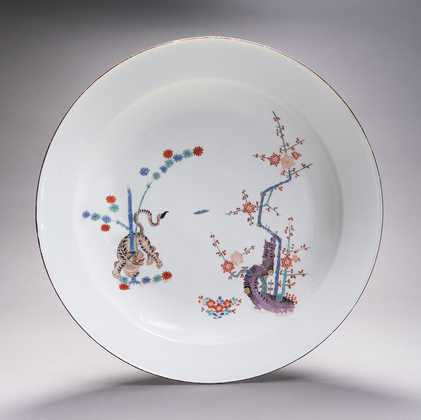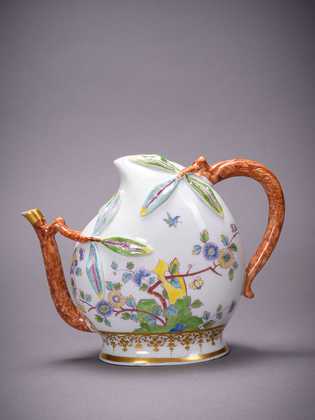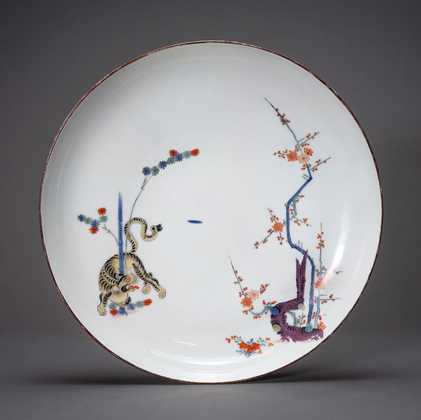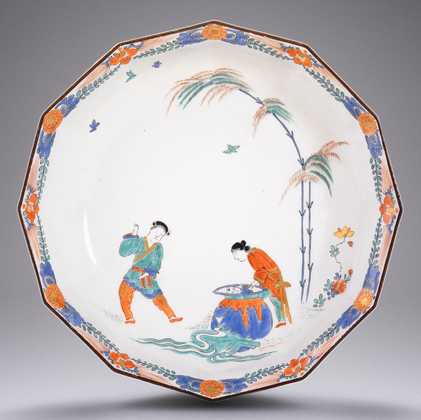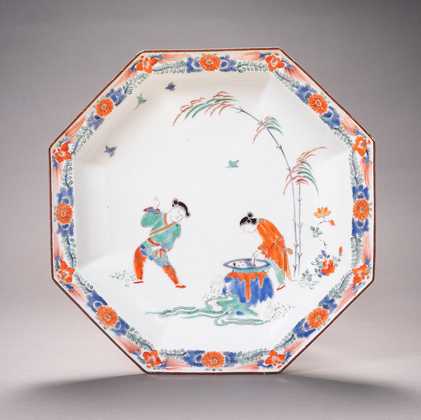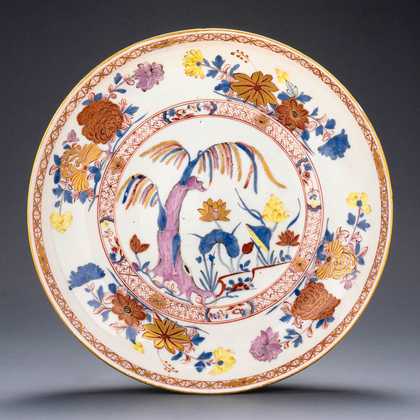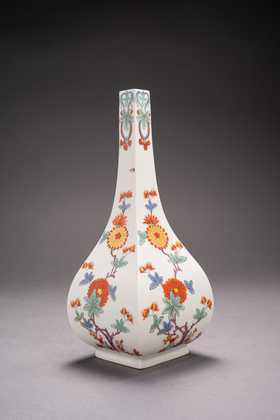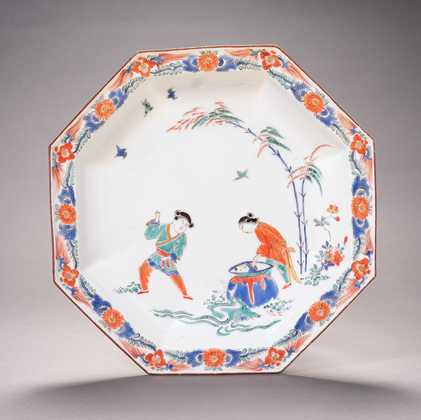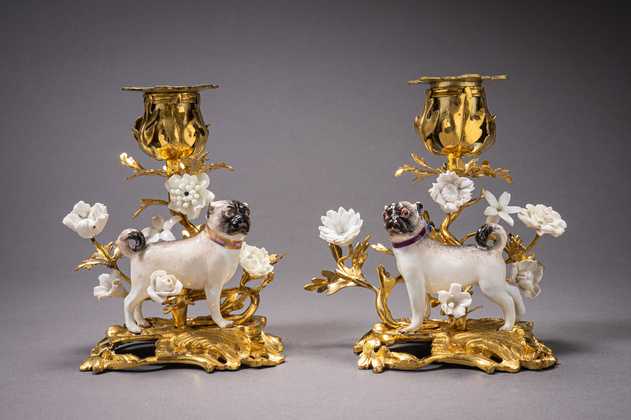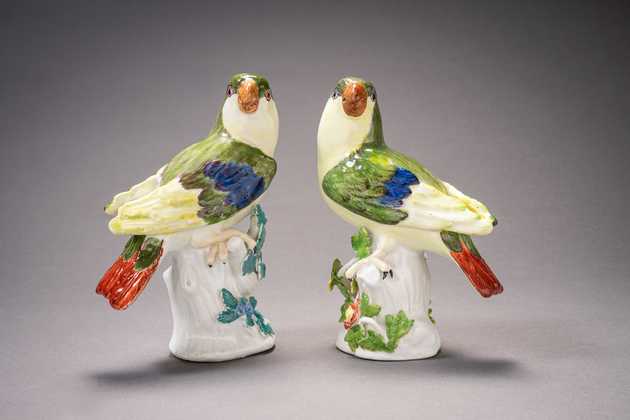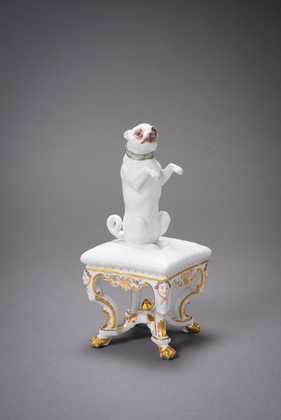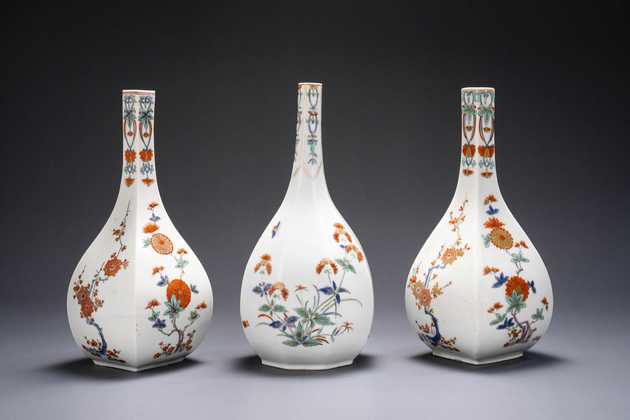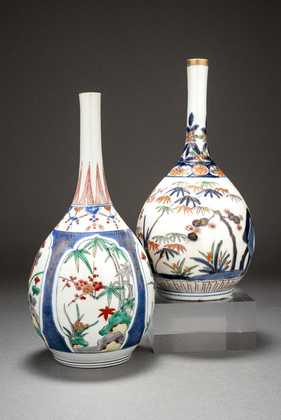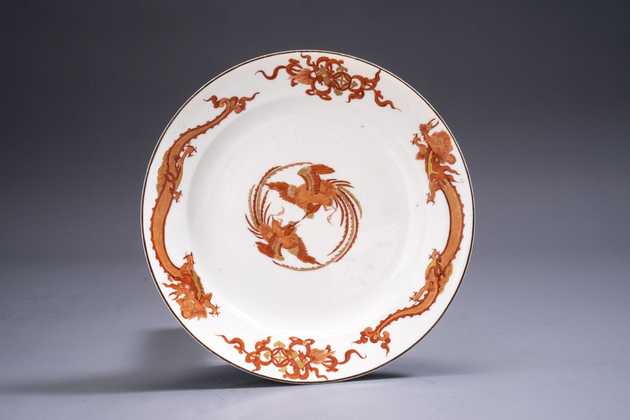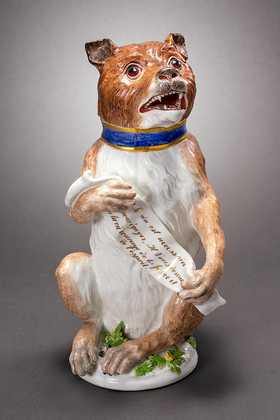




A pair of Japanese Arita Models Cock and Hen with Vermeil Mounting
Japan, Arita, late 17th - early 18th century (for dating see Jenyns 1965 fig. 35B p. 147; Impey 2002 no. 310 p. 194)
Painted in bright enamel colours
Parisian vermeil mounting, mid 18th century
Cock: 21,8 cm high; hen: 20,3 cm high
Description
Since mid of 17th century, figures and animals of Japanese Arita porcelains were produced for the export to Europe. Earliest evidence can be found in the records of the Dutch East India Company published by T. Volker (1956). Among them, were small birds produced especially ("Vogeltiens" Volker 1956 p. 149) for the European market (see also Impey 1990 p. 175 and Jörg 2003 p. 273). These were part of a large cargo of Japanese porcelains (41,400 pieces) transported on six Dutch ships from Deshima to Batavia (today Jakarta) in October 1663.
Japanese models of cocks and hens in different variations were very popular in Europe. This can be illustrated by the example of the Japanese Bantam Rooster the Parisian merchant Lemaire brought to Dresden in 1730. The piece was copied in Meissen to his order (Langeloh anniversary publication 2019 No 71 p. 400 f.). These splendid Japanese cockerels and their Meissen re-creations are characterised by their exotic, brilliant Kakiemon colours and used to achieve top prices on the Parisian luxury goods market forming a lucrative business for Lemaire (Langeloh ibid.; Weber 2013 vol. I p. 53 f.).
In the concerning literature, Arita cocks and hens are dated between end of the 17th to the beginning of the 18th century (Impey 1989, 1990 and 2002; Jörg 2003). Jenyns (1965 T. 35B) dates the Crowing Arita Rooster in the Victoria & Albert Museum, which is decorated similar to ours, between 1688 and 1703. He points to the Genroku Period, when the porcelain quality and the trade with it had reached their peak (Kyoto-Shoin 1958 vol. I p. 10).
Literature
Weber, Julia: Meißener Porzellane mit Dekoren nach ostasiatischen Vorbildern, Band I. München 2013
Weber, Julia: Meißener Porzellane mit Dekoren nach ostasiatischen Vorbildern, Band II. München 2013
Ayers, John; Impey, Oliver; Mallet J.V.G.: Porcelain for Palaces. London 1990
Jenyns, Soame: Japanese Porcelain. London 1965
Impey, Oliver: Japanese export porcelain. Oxford 2002
Jörg, Christian J.A.: Fine & Curious. Japanese Export Porcelain in Dutch Collections.. Amsterdam 2003
Langeloh, Elfriede: 100 Jahre Porzellane und Fayencen des 18. Jahrhunderts.. Jubiläumspublikation 2019
Picture-gallery













